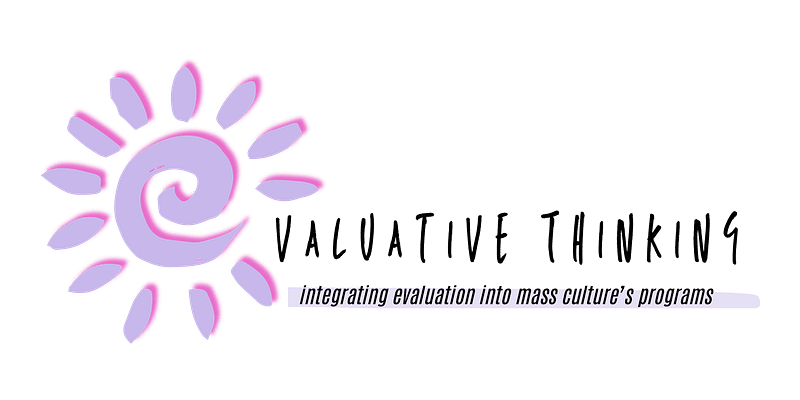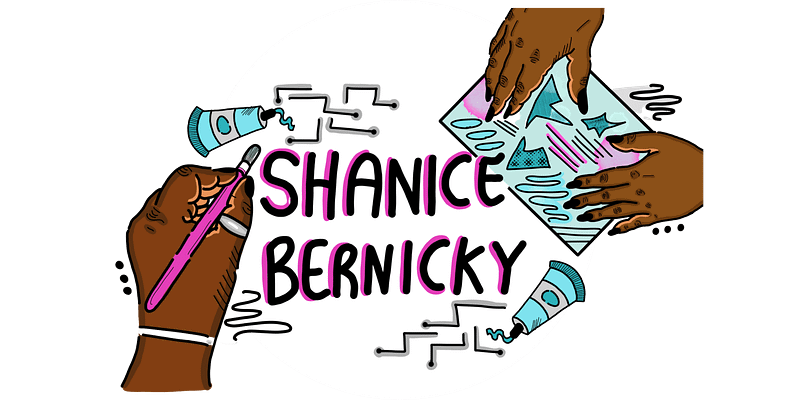
In recent months, the Association acadienne des artistes professionnel.le.s du Nouveau-Brunswick (AAAPNB) has had the privilege of receiving tailored coaching from researcher Shanice Bernicky (Carleton University) in examining its equity practices. There were a number of reasons why the Association was interested in participating in this project.

Firstly, there is a rapid ethnocultural transformation happening in New Brunswick’s arts population as a result of the significant increase in interprovincial and international immigration. While the AAAPNB has seen a slight increase in member diversity in recent years, its membership remains fairly homogenous, particularly in terms of race. The Association would therefore like to identify clear objectives that will ensure it properly represents the province’s entire Francophone artistic and cultural community, as well as relevant strategies to achieve these objectives. Secondly, although the Association is regularly taking steps towards greater equity, it has no clear policy or guidelines to help conduct this work in a structured manner with respect to its membership. As an organization that is committed to greater social justice and has always campaigned for the rights of artists and the Acadian community in general, the AAAPNB felt it was high time to work on structuring its approach to equity. This is why the Association did not hesitate to participate in the Use Case Study phase of the Research in Residence: Arts’ Civic Impact project.
Although the AAAPNB was eager to take advantage of this opportunity to implement new practices while improving others, it quickly realized that this objective was perhaps too ambitious for the amount of coaching time available, especially considering the scope of its daily procedures. The Association also recognized the need to further explore the concept of equity with the entire team, including the Board of Directors. In this regard, it is worth noting that while there was very little racial diversity among the staff and the Board of Directors when the project started, these teams reflected several other forms of diversity, particularly in terms of age, sexual orientation, and countries or regions of origin (Acadia, Quebec, France and Cameroon).
Rather than rushing through steps, the AAAPNB decided to focus on implementing the first pillar of the impact framework developed by Bernicky: the pulse check. Although we often touched on the other pillars of the framework (transparent socialization, effective equity and an ongoing process), the pulse check seemed to be the best starting point for this work primarily aimed at cultivating an equity-based culture within our team. The management team agreed on the need to take the time required to ensure that the approach was well understood by all, and to identify motivating and realistic objectives that would rally the group. Although arts organizations are all in very different situations, we believe it is useful (even necessary) to do a pulse check before diving into the other phases of applying the impact framework developed by Bernicky.
Pulse check
The pulse check was mainly conducted through two types of activity, bearing in mind the cyclical nature of Bernicky’s impact framework. During the first activity, the researcher presented her impact framework to the team members, which was essential, especially considering its academic nature. She and the AAAPNB employee in charge of the project then co-facilitated a discussion on three questions:
- What does equity mean to you?
- In your opinion, what is the AAAPNB doing well in terms of equity?
- What do you think the AAAPNB could do to improve its equity practices?
Two meetings were held: the first with members of the regular AAAPNB team and the second with members of the Board of Directors and the artistic disciplines committee, which includes six artists elected by their peers to represent the AAAPNB members working in six disciplines. At the start of the project, the decision to systematically involve Board members in every step of the project and in every related decision was sometimes seen as an additional barrier to the project’s progress. In hindsight, however, this decision was beneficial in terms of developing an equity-based culture within the Association. It helped to rally team members around a more cohesive vision of equity and to collectively agree on the importance of making it a fundamental principle in all our activities and decisions.
During the second pulse check activity, AAAPNB employees were asked to conduct a collective assessment of the organization’s equity practices using a shared, anonymous file. This exercise was good for answering the second and third questions mentioned above, given that the format reduced the risk of self-censorship in fear of peer judgement. However, the file was created in a way that identified each AAAPNB project. Since only a few employees were assigned to each project, the file was not able to ensure the exercise remained anonymous. We would therefore recommend that other organizations wishing to test the framework ensure that they create a shared tool that truly preserves participants’ anonymity.
This collective assessment resulted in a number of ideas and proposals from employees that would be good to try out at AAAPNB over the coming months. Here are some examples:
- Maintain and update a document containing sociodemographic data voluntarily provided by members of our governance structure to have a clear picture of its composition and to establish clear and relevant diversification strategies.
- Consider people with invisible disabilities, particularly hearing impairments for example, by speaking slower and louder at team meetings and Association events. Regularly check with activity participants that the noise level is good. This is particularly important given that the Association’s membership includes a significant proportion of older artists. Develop partnerships with community organizations that serve equity-seeking groups and amplify their work in our social networks.
- Encourage hybrid events (in person and online) to maximize participation by artists living in remote areas or by children, for example.
- Ensure that we systematically ask about accessibility needs in our activity registration and evaluation forms.
- Create awards or special acknowledgements that highlight the exceptional contributions of artists from diverse backgrounds at our Les Éloizes festival.
- Develop and support cultural mediation projects with a social slant, for example projects aimed at integrating newcomers, breaking senior isolation, promoting intercultural dialogue, etc. in Francophone municipalities across the province.
What does equity mean?
The group’s exploration of the meaning of the term “equity” led to several observations. First, given that most employees have fewer than three years’ experience with the organization, the team did not have in-depth knowledge of the history of AAAPNB’s equity practices. As such, it was difficult to identify what had worked and what had not when it came to integrating equity as a fundamental principle into activities and decisions. Only the executive director was aware of diversity within the Association and the background to its approach to equity and social justice since she has been with the organization for almost 25 years. The exercise made the team realize that this piece of organizational memory was held by a single individual, and that it was imperative to work on sharing and preserving this knowledge in the future.
Second, employees sometimes seemed confused when it came to taking concrete action to promote equity. This confusion was due to there being many equity-seeking groups, making it difficult to decide which group to prioritize over others and why, as well as a shared feeling of walking on eggshells in dealing with certain groups, particularly Indigenous and non-binary people. Some people said they wanted to learn how to build respectful relationships with Indigenous communities, but did not know how, or did not want to impose themselves on them. In this case, the discomfort seemed likely to have a paralyzing effect on the Association. The AAAPNB must pay close attention to its approach with Indigenous peoples, especially considering that many of its projects are carried out in collaboration or direct or indirect association with Indigenous groups.
Third, and in connection with what has just been mentioned, the discussion brought to light areas of tension and discomfort, particularly regarding the actions needed to improve the AAAPNB’s equity practices. Sometimes suggestions and constructive criticism were met with resistance. One notable element from the discussion was how the minority language context seemed to predispose certain employees to engage in actions to improve our equity practices. The conversation was helpful in better understanding how Francophone minority communities are negatively and emotionally affected by marginalization and by their exclusion from many programs intended to protect other equity-seeking groups (e.g., racialized, Indigenous, disabled, women, LGBTQ2A+, etc.) in the arts. As proud people whose identity has been built on a foundation of resilience and resistance, Acadians have developed reflexes and habits that protect their peers and everything they have fought long and hard to gain. As such, one of the greatest challenges for arts organizations serving official language minority communities is to approach equity from an intersectional standpoint.
These pulse checks helped rally the entire team around the project, clarify its objectives, discuss what could realistically be achieved, explore areas of discomfort, and deconstruct certain preconceived and false notions. While the AAAPNB was working on applying the impact framework, one employee shared that she was now always thinking about equity in her work. In very little time, the project was well ingrained in the mindsets of the people who help the Association fulfill its mission and mandate. Impressive!
Ensure that the Association adequately represents the province’s Acadian and Francophone artists
In addition to the work conducted with the team, the Board of Directors and the artistic disciplines committee, this project was an opportunity for the AAAPNB to question its ability to reach and adequately represent all Acadian and Francophone professional artists in the province. However, without membership composition data, it was difficult to establish a clear equity mandate and realistic, relevant targets.
We decided to create a self-identification form. Here again, Bernicky’s support played a key in developing questions that were both precise and sensitive, as well as an ethical and transparent method for data management. This form also provided an opportunity to inform staff, Board members, and eventually Association members, of our obligations under the Employment Equity Act. With their permission, we also drew inspiration from a similar form administered by the New Brunswick Arts Board (ArtsNB). This was helpful for certain staff and Board members who said they were having trouble understanding this overall process.
The content of the form also led to some lively exchanges within the Board and with some team members. More specifically, the questions on sexual orientation and gender identity made many people uncomfortable, saying they felt the questions were intrusive. As a result, two of these questions were moved to the end of the form and made optional, warning respondents of the nature of the questions in advance. After several iterations, the form was finally approved by the Board of Directors. It is currently in a testing phase with team members and is scheduled to be sent to Association members in fall 2024. An aggregated summary of the results will be sent to members and the team to raise awareness and explore potential areas for improvement in representing artists from equity-seeking groups.
Overall, our participation in this project has had a significant impact on both an individual and organizational level. After the Use Case Study project had ended, one employee expressed a desire to keep this equity file open and continue to work on it. On a related note, having access to the impact framework created by Bernicky will facilitate this work in terms of guiding the Association in the application of the other three pillars: transparent socialization, effective equity, and an ongoing process. The researcher also agreed to answer any questions or comments related to the application of her impact framework, even after the project had ended.

